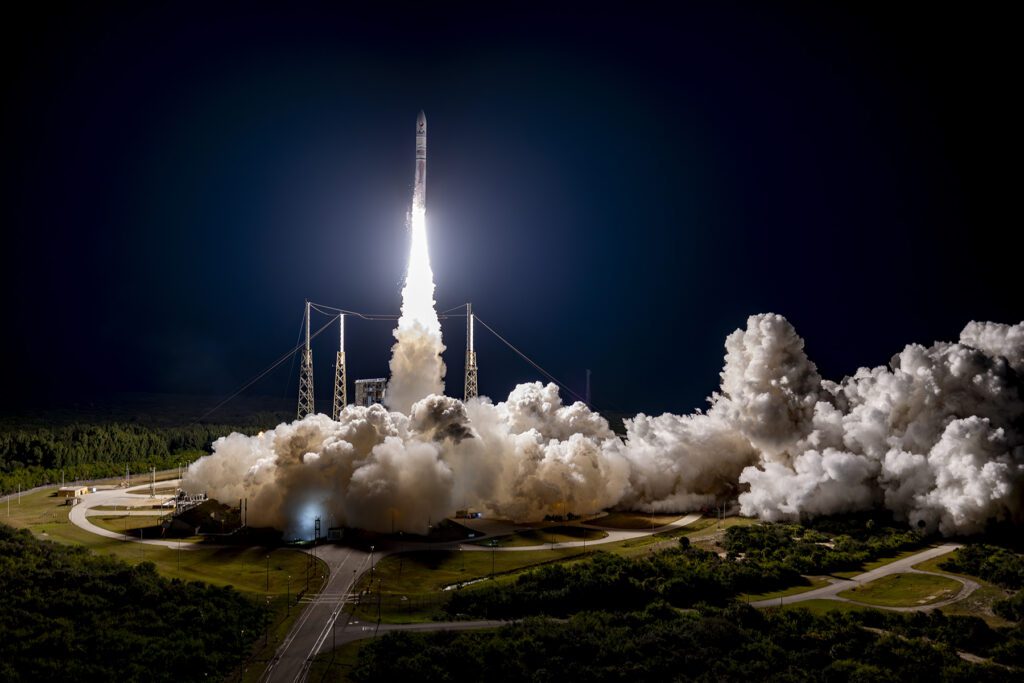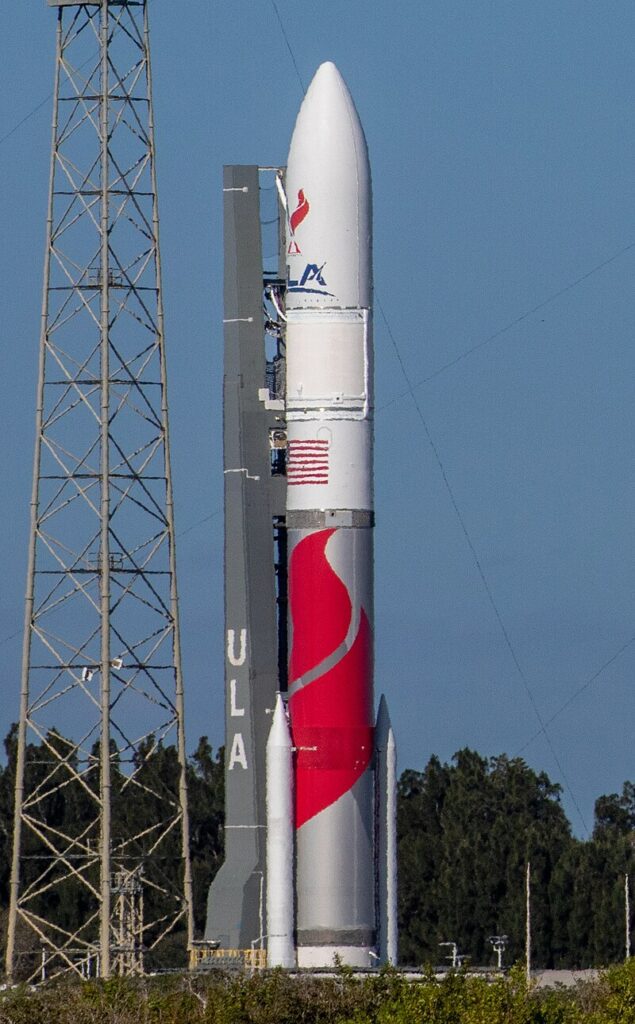The Peregrine PM-1 lunar lander began its journey to the Moon on 8 January on board a Vulcan-Centaur 542 rocket launched on its maiden flight from Cape Canaveral, Florida, at 0718 GMT. If it succeeds in its landing attempt on 23 February, it will become the first US spacecraft to land on the Moon since the Apollo era over 51 years ago.
The Peregrine PM-1 lunar lander was built, and is operated by, Astrobiotic, a private firm. However, it also contains NASA experiments under a Commercial Lunar Payload Services (CLPS) contract. Also onboard the Vulcan-Centaur 542 was the Celestis Enterprise Flight payload, a total of 150 cremated human remains. This caused a ripple of protest from some US indigenous Indian tribes who regarded it as a desecration of the Moon.
Update on 10 January: Peregrine PM-1 fell into safe mode after release and could not initially capture the sunlight needed to generate its power. The orientation was later corrected so that its battery could be charged. However, the attitude control situation – specifically a critical loss of propellant – involved a suspected rupture of its oxidiser tank caused by a pressurant valve’s failure to shut properly. Seradata understands that while the launch was insured (reflight costs), the Peregrine lander was not. Consequently, there will be no insurance payout since the failure occurred after separation and was not the fault of the launch vehicle.

Vulcan Centaur’s maiden launch of Astrobiotic’s Peregrine lunar lander. Courtesy: ULA
While much was made in global media about the Peregrine failure, an aspect of the launch that was perhaps more important to the space community was somewhat overlooked. The Vulcan-Centaur rocket’s first flight marked an upgrade in United Launch Alliance’s (ULA) offering as it attempts to compete with SpaceX on military/government launches and some commercial ones.

Peregrine PM-1 mission flight plan. Courtesy: Astrobiotic
The launch was considered successful given that maiden launches have failure rates above 40 per cent. For ULA, it was a key milestone to gaining military launch orders from the US government as the company needs to demonstrate two certification flights before it can fly any military payload. Thankfully for ULA this flight, dubbed Cert-1, was a success with all the Centaur upper-stage burns being achieved. At present Vulcan-Centaur is being built as an all-expendable rocket, although there are plans to make a reusable main-stage engine compartment.
The Vulcan-Centaur rocket family uses two LOX (Liquid Oxygen)/Methane burning BE-4 engines, supplied by Blue Origin for its core first stage, and a pair of LOX/Liquid Hydrogen RL-10C1 engines on its Centaur V upper stage. The 542 configuration flown on this flight had two GEM-63XL solid rocket boosters initially attached to the core stage.

Vulcan-Centaur 542 ahead of its maiden flight. Courtesy: Wikipedia
Comment by David Todd: While it cannot always compete on price, ULA is known to have an excellent record for reliability. In Seradata’s survey of launch premium rates (available to our database clients), underwriters’ confidence in ULA was demonstrated by how low they were prepared to go in their quotes for the early launches of a brand-new rocket, compared with its competitors. On an aesthetic note, the Vulcan rocket is very attractive, sporting the best looking red and white paint scheme since the black and white one of the Apollo era’s Saturn V.








